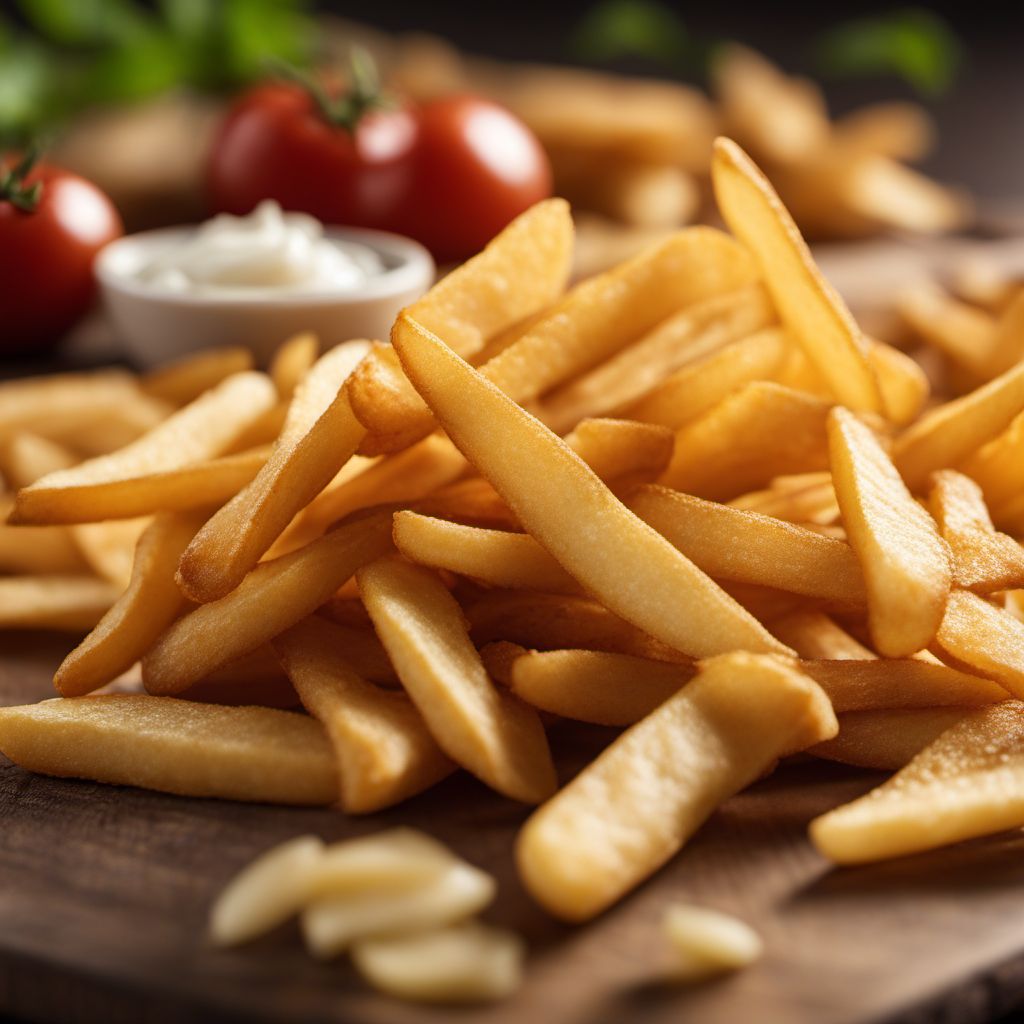
Ingredient
Fries (finger chips)
Crispy Potato Delights
Fries are made from potatoes that are cut into long, thin strips and deep-fried until golden and crispy. They have a soft and fluffy interior with a satisfying crunch on the outside. Fries can be seasoned with salt, herbs, spices, or other flavorings to enhance their taste. They are commonly served as a side dish with burgers, sandwiches, or as a snack on their own.
Origins and history
The exact origin of fries is a subject of debate, with multiple countries claiming to be the birthplace of this beloved dish. While the origins may be disputed, it is widely accepted that fries gained popularity in Western Europe during the 17th century. They were introduced to the United States by French immigrants and quickly became a favorite fast food item. Today, fries are enjoyed worldwide and have been adapted to suit different culinary traditions and preferences.
Nutritional information
Fries are a good source of carbohydrates and provide energy for the body. However, they are typically high in calories and fat due to the deep-frying process. It is important to consume fries in moderation as part of a balanced diet. Baked or air-fried alternatives can be healthier options for those looking to reduce their calorie and fat intake.
Allergens
Fries may contain allergens such as gluten if they are coated with a batter or seasoning that contains wheat. Cross-contamination with other allergens like peanuts or soy may also occur during the frying process. Individuals with specific allergies or dietary restrictions should exercise caution and inquire about the ingredients and preparation methods when consuming fries.
How to select
When selecting fries, look for products that are made from high-quality potatoes and are free from any discoloration or signs of spoilage. Frozen fries should be stored in a freezer at the recommended temperature to maintain their quality. It is advisable to check the packaging for any cooking instructions or additional information regarding the product's origin and ingredients.
Storage recommendations
To keep fries fresh and crispy, it is important to store them properly. Leftover fries should be cooled to room temperature and stored in an airtight container or resealable bag. They can be refrigerated for up to 2 days or frozen for longer storage. Reheating fries in an oven or air fryer can help restore their crispiness before serving.
How to produce
Producing fries at home can be a fun and rewarding experience. Start by selecting fresh and firm potatoes, preferably varieties that are suitable for frying, such as Russet or Yukon Gold. Peel and cut the potatoes into uniform strips, then soak them in cold water to remove excess starch. Pat the strips dry and fry them in hot oil until golden and crispy. Season with salt or other desired seasonings before serving.
Preparation tips
Fries are incredibly versatile and can be enjoyed in various ways. They are commonly served as a side dish with burgers, sandwiches, or hot dogs. Fries can also be topped with cheese, gravy, or chili to create loaded fries. In some cuisines, such as poutine in Canada or moules-frites in Belgium, fries are an integral part of traditional dishes. Additionally, fries can be seasoned with different spices or herbs to create unique flavor combinations.
Availability
Fries are widely available in restaurants, fast food chains, and food stalls around the world. They can also be purchased frozen from grocery stores or supermarkets, allowing for easy preparation at home.

